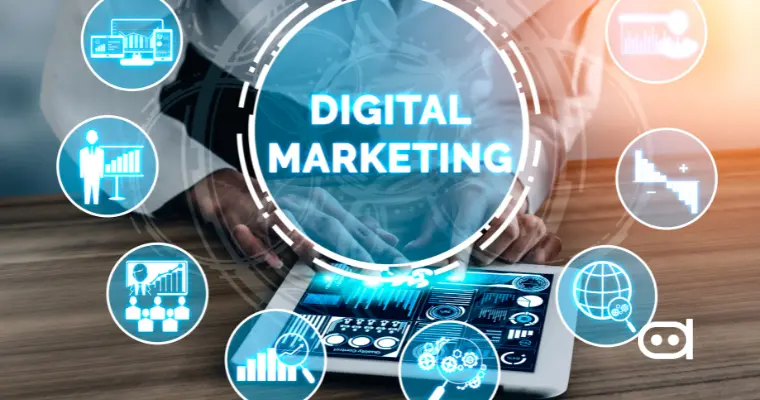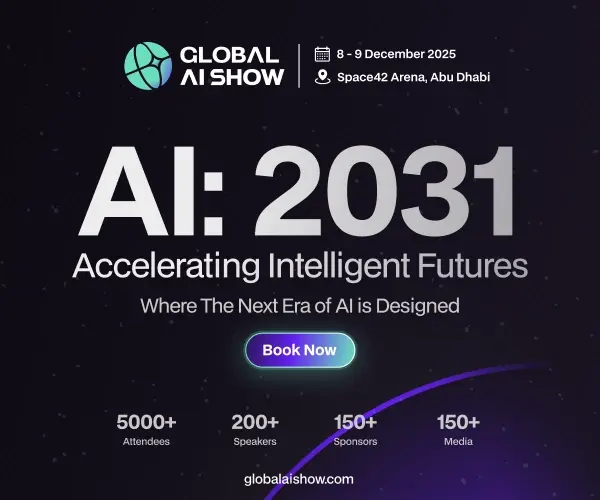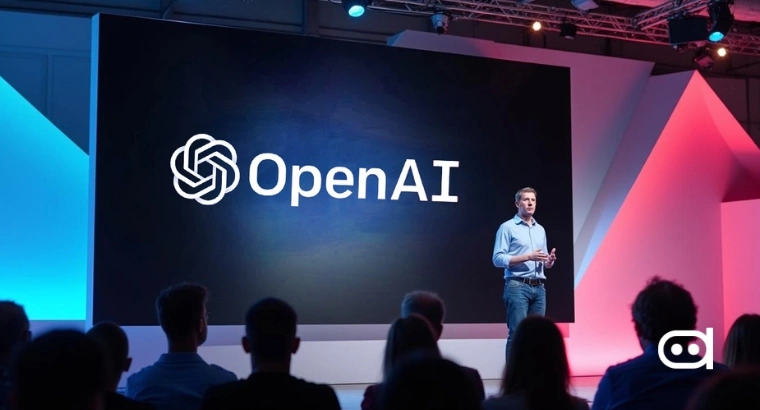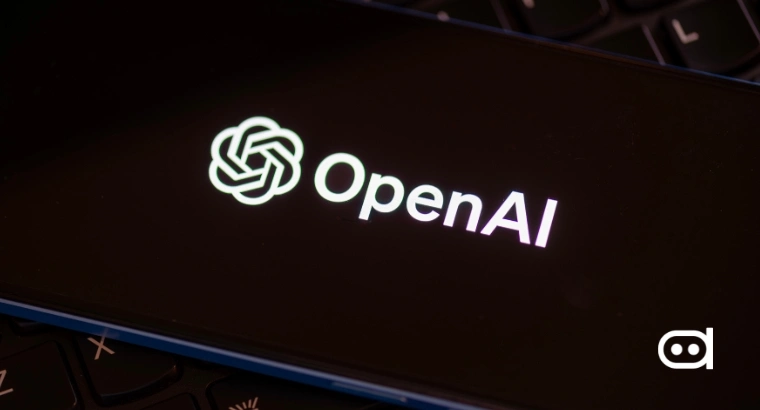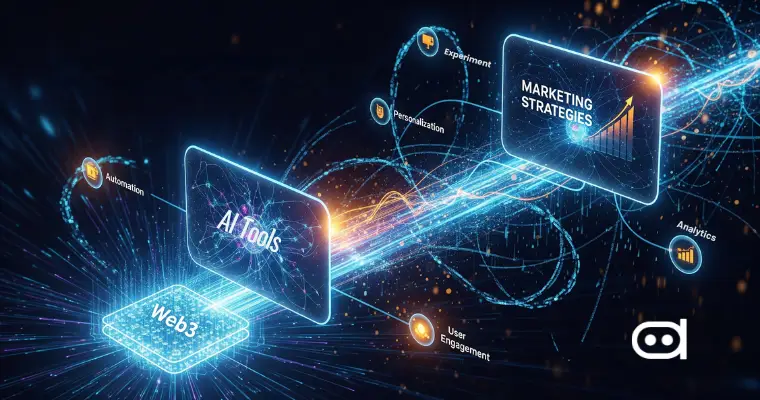
The combination of artificial intelligence and Web3 technologies has given rise to never-before-seen marketing opportunities for the decentralized ecosystem. Unlike earlier paradigms in Web3 marketing, decentralized marketing models consider communities as owners and participants in their own right.
The evolution of AI-based Web3 marketing strategies in 2025 under the Web3 blockchain umbrella intends to encourage real, transparent, and value-oriented relationships between brands and their communities.
Key Takeaways
- AI has changed the relationship between community engagement tools built for Web3 brands and their audiences.
- Hyper-personalized marketing campaigns consolidate blockchain data to create targeted experiences without violating privacy.
- Automated topical generation ensures consistent and high-quality engagement of these brands across decentralized platforms.
- Predictive token behavior analytics provide insight for data-driven decision-making by the brands.
- AI-mediated fraud detection can greatly further trust and credibility in the Web3 landscape.
Understanding Web3 Marketing
The differences between Web2 and Web3 marketing are at the core of their being. The focus of Web2 marketing is to grab the attention of the user with targeted advertisements and data harvesting. Web3 marketing, on the other hand, focuses on community-building, utility provision, and value-sharing with token holders.
Web3 marketing comes with its own challenges which include but are not limited to regulatory uncertainty, technical complexity, and educating audiences about the value of blockchain technology. The decentralized nature requires marketers to adapt to fragmented audiences across multiple platforms, while maintaining authenticity and trust.
The Role of AI in Modern Marketing
With AI becoming the backbone of marketing, it has reshaped the way brands glean insight and communicate with clients in a valuable manner. AI presents the value-of-interactions services from automation toward higher insights, prediction, or creation services customized to run at scale.
Contemporary marketing AI applications include predictive analytics for consumer behavior forecasting, natural language processing for chatbots and content generation, computer vision for automated content analysis, machine learning for campaign optimizations, and sentiment analysis for community perception gauging.
How AI Tools Are Transforming Web3 Marketing
The infusion of AI tools for Web3 marketing strategies opens up new avenues for brands to bring synergy to their communities in a meaningful and efficient way.
Smarter Community Engagement
AI-powered community engagement tools redefine the way Web3 brands interact with audiences on Mastodon, Bluesky, and other decentralized platforms. When used with natural language processing, AI can help understand community sentiment, discover key influencers, and provide real-time responses to queries.
Machine learning algorithms can analyze conversation patterns to discover topics of widespread interest and emerging community issues. This lets brands intervene whenever issues or engagement opportunities arise. AI-powered community management tools assist with the scheduling of content across time zones to ensure engagement with audiences regardless of geographical restrictions.
Hyper-Personalized Marketing Campaigns
AI helps Web3 marketers generate an unprecedented degree of personalization by considering features from on-chain data to transaction histories and community interactions. They can then use these insights for highly targeted campaigns that appeal directly to individual users in the Web3 ecosystem. Together, AI and blockchain allow for privacy-preserving personalization, where users control their own data while marketers supply relevant content.
Automated Content Creation
AI content creation technology can help Web3 brands keep consistent messaging and interaction on multiple channels, across social media posts, blog articles, technical documentation, and community updates. NLG models trained on Web3-specific content allow automated content to remain authentic and industry-relevant.
AI has greatly transformed the creation of visual content, with tools capable of creating graphics, animations, and videography for different blockchain projects. Based on the requirements of the target audience and platform, AI can also alter the style and tone of the content.
Predictive Analytics for Token Behavior
AI-driven predictive analytics has redefined the way in which Web3 marketers observe and predict the behavior of a token, market trends, and community dynamics. These systems analyze a huge amount of on-chain data, social sentiment, and market indicators to forecast movements in price, trading volume, and levels of community engagement.
Its application goes even beyond simple price predictions, permitting community growth forecasting, engagement optimization, and strategic planning. AI systems can forecast what marketing campaigns might lead to token adoption and community participation, allowing efficient resource allocation.
Fraud Detection and Trust Building
Fraud detection systems powered by AI are essentially the trust-building mechanisms that Web3 requires. They employ machine learning to analyze suspicious transaction patterns, interactions within communities, and campaigns .AI can detect differences between genuine users and potential scammers or bot networks, by scanning various behavioral traits
The sophistication extends into social media monitoring, where the AI can detect malicious activities capable of harming a brand’s reputation. This security-forward stance helps keep the trust of the community and protects legitimate users from fraud.
Influencer & KOL Targeting
Identification of influencers and KOLs in the Web3 space using AI is another significant change that has industry-wide implications.. Machine learning algorithms can identify micro-influencers and emerging thought leaders before they are glamorized by mainstream media.
AI tools can look into on-chain activities, social media engagement, and community participation to identify and create initial influencer profiles. These profiles, in turn, help in strategic campaign partnerships, ensuring better outcomes in terms of ROI and community-building.
Top AI Tools Used in Web3 Marketing
| Tool | Primary Function | Key Features | Web3 Use Cases |
|---|---|---|---|
| ChatGPT | Content creation, community management | Natural language generation, conversation AI | Community Q&A, content creation, social media management |
| Synthesia | Video content creation | AI-powered video generation, multilingual support | Educational content, project explanations, multilingual campaigns |
| Jasper | Marketing content creation | Brand voice training, template library, SEO optimization | Blog posts, social media content, email campaigns |
| LayerAI | Blockchain analytics and Insights | On-chain data analysis, predictive modeling | Token behavior analysis, community insights |
| SproutGPT | Social media management | Automated posting, engagement tracking, sentiment analysis | Multi-platform management, community monitoring |
Future Trends: What’s Next for AI in Web3 Marketing
Further down the road, however, AI may revolutionize Web3 marketing via more promising integration between artificial intelligence and blockchain technology. Developed to tackle top concerns over privacy and security, AI and Web3 technology ICs are now providing solutions in areas like decentralized identity management and zero-knowledge proofs.
This development could see the dawn of Web3-based AI marketplaces where resource nodes supply computing power to run lightweight on-device models. Partnering with a Web3 marketing agency can help businesses navigate these emerging ecosystems, as such platforms decentralize the process of AI inference away from traditional cloud providers and open new tokenized incentive mechanics.
It could also be viewed as a window of opportunity for new economic models to be brought within limits and for broader democratization of access to AI tools. Convergence is expected to give rise to more refined autonomous marketing systems that execute complex high-level strategies with minimal intervention of human beings.
Conclusion
The transformation of AI in Web3 marketing through AI tools represents a fundamental shift in how brands engage with decentralized communities. From smart community engagement to hyper-personalized campaigns, predictive analytics, and fraud detection, AI is introducing more subtle, efficient, and effective marketing options in the Web3 world.
FAQ’s
How are AI tools being used in Web3 marketing?
In Web3 marketing, AI helps with automated community management, prediction of token behavior, designing personalized campaigns, and detection of fraud. These tools function by analyzing on-chain data and analyzing community interactions to optimize any Web3 marketing strategy.
What are the benefits of using AI in Web3 marketing strategies?
The main areas of benefit are efficient automation, better personalization through blockchain data, fraud detection and security, accurate data analysis using analytics, and managing complex multi-platform campaigns with authenticity.
Are there any challenges in using AI in Web3 marketing?
Yes, there are some challenges faced when using AI in Web3 marketing. These hurdles exist due to the complexities in AI interfacing with blockchain technology, as well as data security and privacy issues, regulatory compliance, and other requirements, such as specialized expertise in the AI and Web3 ecosystems.
Is it expensive to adopt AI tools for Web3 marketing in 2025?
The cost of adopting AI tools will depend on the product and the scale of implementation. While simple AI tools are becoming affordable, sophisticated AI marketing platforms continue to be costly.


